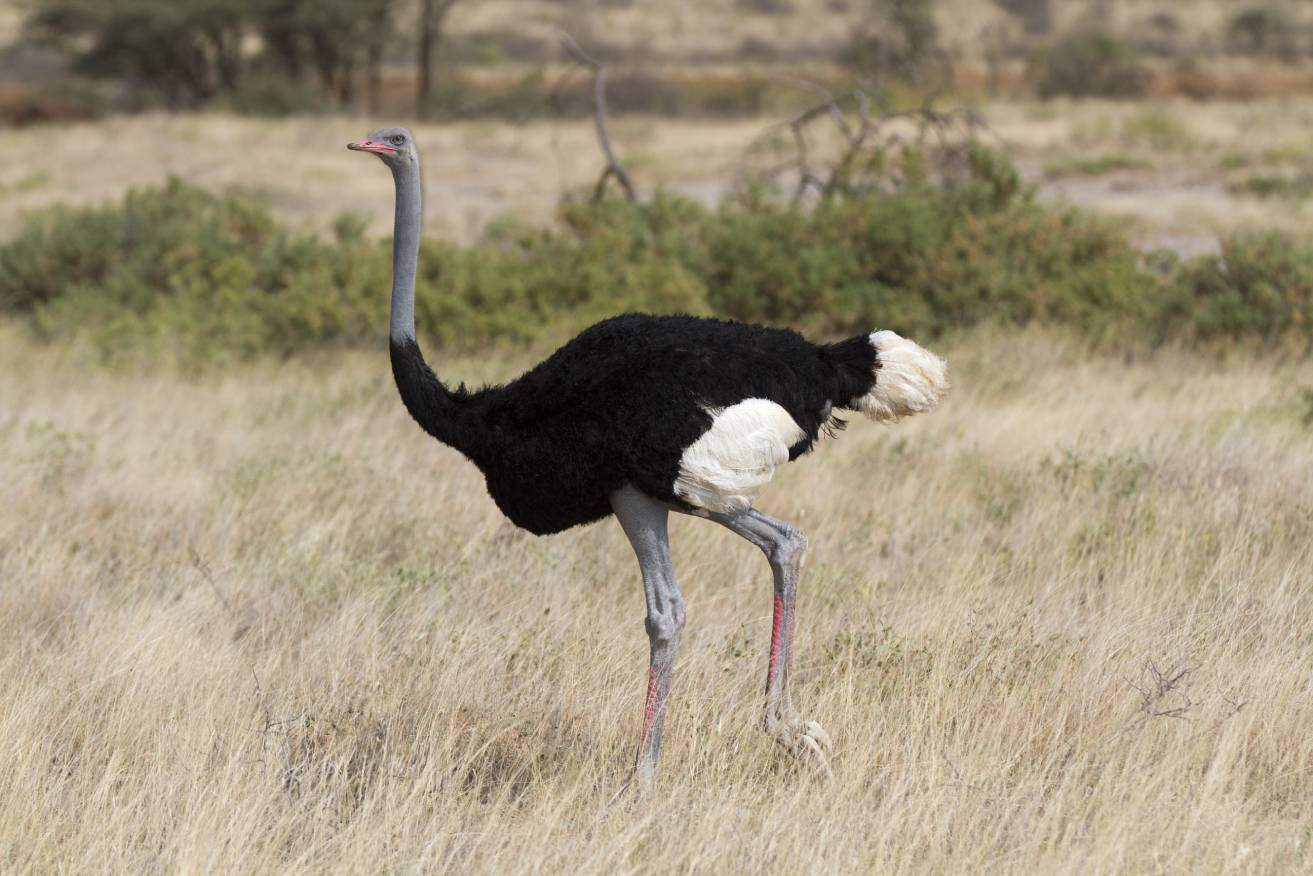Male birds are well known for their brilliant displays of color and movement during the breeding season. What you may not realize is that male ostriches are no different from smaller birds! During the breeding season, male ostriches may be seen putting on quite the show to earn the affection of a lady or two. Here are the answers to all your questions about ostrich mating behavior!

When Is the Ostrich Mating Season?
In the wild, ostriches are known to mate between April and September. Generally, ostrich eggs take around 42 days of incubation before hatching. An ostrich’s baby is simply called a chick.
Do Males Exhibit Physical Changes During Mating Season?
While male ostriches tend to keep a small harem of females, this doesn’t mean they don’t have to work for mating rights when the time comes. To increase their appeal to the females, male ostriches develop a deep scarlet coloration on the beak, neck, head, and legs. They will also become vocal, making a hollow booming call to females. The rest of the year, male ostriches rarely make noise.
Once they’ve developed their breeding colors, males will begin putting on an elaborate dance to attract females. They will also have to compete with any other male ostriches that come around looking for love. During mating season, ostriches can be seen chasing each other around, as well as vicious fighting between males. Male ostriches use their long legs and sharp talons to fight with each other, with the winning male often coming out on top in the eyes of the female ostriches.
How Do Female Ostriches Show Receptivity?
It’s important for a male ostrich to know the signs that a female is receptive to his advances. A receptive female will hold her wings out and wiggle the tips of them. She will crouch and hold her head low, bobbing it and snapping her beak. Throughout the mating process, she will continue to crouch, hold her head low, snap her beak, and bob or shake her head.
Is it True that Male Ostriches Will Dance for Humans?
Yes!
Many male ostriches will take a shine to their human keepers. While this sounds like a silly problem to have, it can have serious implications. One such implication is that ostriches attracted to their human keepers may spend their time attempting to woo a human instead of female ostriches. This can even lead to a male ostrich refusing to mate, leading to a decrease in offspring production among the flock.
The other issue this can pose is the danger to the human or humans the ostrich seems to like. Ostriches are extremely large and dangerous birds, sometimes reaching over 9 feet in height and having a 4-inch talon on each foot. They’re also extremely fast, running up to 45 miles per hour on average but reaching 60 miles per hour over short distances. It’s recommended for ostrich keepers who have a lovelorn male ostrich to always keep a fence between them to prevent accidental or intentional injury from the ostrich.

In Conclusion
The mating dance of the ostrich is a beautiful display, especially coupled with the elegance of the bird and the scarlet coloration taken on by the male during the breeding season. While a mating dance is not unique to ostriches, the dance the males perform is unique to these birds, as is the behavior exhibited by the female to show her receptivity to the male.
During the breeding season, ostriches can become quite dangerous. This is especially true of male ostriches, who will fight with each other to compete for females. However, male ostriches sometimes take a liking to their human keeper, which can create a dangerous environment for the human, who may be injured or even killed by the advances of the male ostrich.
You may also want to read:
- Do Ostriches Have Ears? How Do They Hear?
- How Do Ostriches Sleep? The Surprising Answer!
- Is an Ostrich’s Eye Bigger than Its Brain? What You Need to Know!
- Do Birds Dance to Music? Here’s What Science Says
Featured Image Credit: Papa Bravo, Shutterstock
